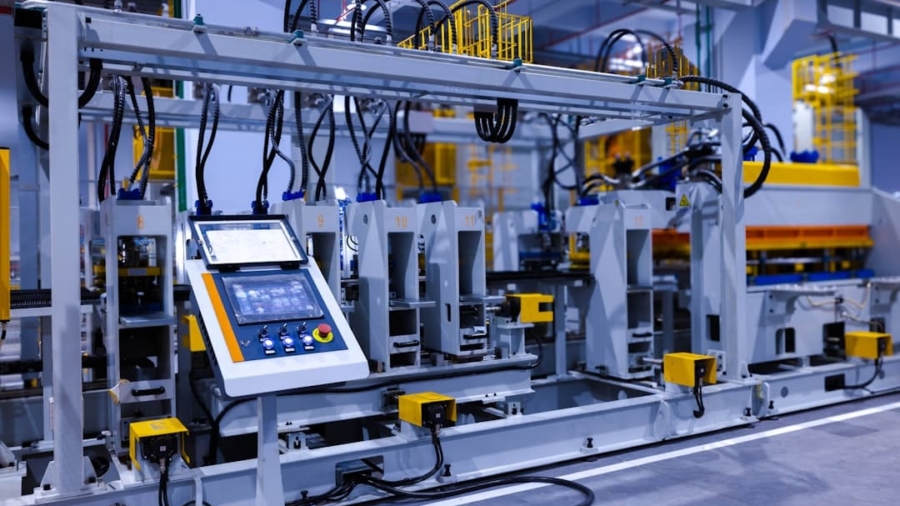Industrial waste refers to the byproducts generated from manufacturing processes, construction activities, and other industrial operations. This waste can take various forms, including solid, liquid, and gaseous materials, and often contains hazardous substances that pose significant environmental and health risks. The management of industrial waste has become a pressing concern as industries strive to comply with increasingly stringent regulations and societal expectations regarding sustainability.
In this context, artificial intelligence (AI) emerges as a transformative technology that can revolutionize how industries approach waste management. AI encompasses a range of technologies, including machine learning, data analytics, and automation, which can be harnessed to optimize processes, enhance decision-making, and improve operational efficiency. By leveraging AI, industries can gain deeper insights into their waste generation patterns, identify opportunities for reduction, and implement more effective waste management strategies.
The integration of AI into industrial waste management not only helps in minimizing the environmental footprint but also contributes to cost savings and improved resource utilization.
Key Takeaways
- Industrial waste is a significant environmental concern, and AI has the potential to revolutionize waste reduction efforts.
- Predictive insights provided by AI can help industries identify patterns and optimize processes to minimize waste generation.
- Case studies demonstrate the successful implementation of AI in reducing industrial waste, leading to cost savings and environmental benefits.
- The use of AI for industrial waste reduction offers benefits such as improved efficiency, reduced environmental impact, and enhanced resource management.
- Despite its potential, AI in industrial waste reduction faces challenges such as data limitations, implementation costs, and the need for human oversight.
The Role of Predictive Insights in Industrial Waste Reduction
Predictive insights derived from AI algorithms play a crucial role in identifying trends and patterns in waste generation. By analyzing historical data, AI systems can forecast future waste production based on various factors such as production schedules, raw material usage, and equipment performance. This predictive capability allows industries to proactively manage their waste streams rather than reactively addressing issues as they arise.
For instance, a manufacturing plant can utilize predictive analytics to anticipate spikes in waste generation during peak production periods, enabling them to adjust operations accordingly. Moreover, predictive insights can facilitate the identification of inefficiencies within production processes that contribute to excessive waste. By employing machine learning models that analyze operational data in real-time, companies can pinpoint specific stages in their manufacturing processes where waste is generated disproportionately.
For example, a textile manufacturer might discover that a particular dyeing process results in high levels of chemical waste; by optimizing this process through AI-driven insights, they can minimize both waste and associated costs.
Case Studies: Successful Implementation of AI in Industrial Waste Reduction
Several industries have successfully implemented AI-driven solutions to tackle the challenge of industrial waste reduction. One notable example is the automotive sector, where companies like Ford have adopted AI technologies to enhance their manufacturing processes. Ford’s use of AI algorithms has enabled them to analyze vast amounts of data from their production lines, leading to the identification of inefficiencies that contribute to material waste.
By optimizing their supply chain and production schedules based on these insights, Ford has significantly reduced scrap rates and improved overall resource efficiency. Another compelling case study can be found in the food processing industry. Companies such as Nestlé have embraced AI to minimize food waste throughout their supply chains.
By utilizing machine learning models to predict demand more accurately, Nestlé has been able to align production levels with actual consumer needs. This approach not only reduces excess inventory but also minimizes the amount of food that goes unsold and ultimately wasted. Additionally, AI-driven monitoring systems help track expiration dates and optimize inventory management, ensuring that products are utilized before they spoil.
The Benefits of Using AI for Industrial Waste Reduction
The adoption of AI in industrial waste reduction offers numerous benefits that extend beyond mere compliance with regulations. One of the most significant advantages is the potential for substantial cost savings. By optimizing processes and reducing waste output, companies can lower disposal costs and improve their bottom line.
For instance, a chemical manufacturer that implements AI-driven process optimization may find that it can reduce its raw material consumption while simultaneously decreasing the volume of hazardous waste generated.
This not only frees up human resources for more strategic initiatives but also minimizes the likelihood of human error in waste management processes.
For example, an electronics manufacturer might deploy AI-powered robots to sort and recycle electronic waste more effectively than manual methods could achieve. This automation not only increases accuracy but also accelerates the recycling process, leading to higher recovery rates of valuable materials.
Challenges and Limitations of AI in Industrial Waste Reduction
Despite the promising potential of AI in industrial waste reduction, several challenges and limitations must be addressed for successful implementation. One significant hurdle is the quality and availability of data. AI systems rely heavily on accurate and comprehensive datasets to generate meaningful insights.
In many cases, industries may struggle with fragmented data sources or insufficient historical data, which can hinder the effectiveness of AI algorithms. For instance, a manufacturing facility may have multiple production lines with varying data collection methods, making it difficult to create a unified dataset for analysis. Additionally, there is often resistance to change within organizations when it comes to adopting new technologies like AI.
Employees may be apprehensive about the implications of automation on their jobs or skeptical about the reliability of AI-driven insights. Overcoming this cultural barrier requires effective change management strategies that emphasize the benefits of AI while addressing concerns about job displacement. Training programs that equip employees with the skills needed to work alongside AI systems can help foster a more positive attitude toward technological advancements.
Future Trends and Innovations in AI for Industrial Waste Reduction
As technology continues to evolve, several trends are emerging that will shape the future of AI in industrial waste reduction. One notable trend is the increasing integration of Internet of Things (IoT) devices with AI systems. IoT sensors can collect real-time data on various parameters such as temperature, humidity, and equipment performance, which can then be analyzed by AI algorithms to optimize processes further.
For example, a manufacturing facility equipped with IoT sensors could monitor energy consumption patterns and adjust operations dynamically to minimize energy waste. Another promising innovation is the development of advanced machine learning techniques that enable more accurate predictions and insights. Techniques such as deep learning are being explored for their potential to analyze complex datasets with greater precision.
This could lead to more sophisticated models capable of identifying subtle patterns in waste generation that traditional methods might overlook. As these technologies mature, industries will be better equipped to implement proactive waste reduction strategies tailored to their specific operational contexts.
Ethical and Environmental Considerations in AI for Industrial Waste Reduction
The deployment of AI in industrial waste reduction raises important ethical and environmental considerations that must be carefully navigated. One key concern is the potential for bias in AI algorithms, which could lead to inequitable outcomes in waste management practices. For instance, if an AI system is trained on biased data that does not accurately represent all aspects of a manufacturing process, it may produce skewed insights that disproportionately affect certain operations or communities.
Ensuring fairness and transparency in AI decision-making processes is essential for fostering trust among stakeholders. Moreover, while AI has the potential to enhance sustainability efforts, it is crucial to consider the environmental impact of the technology itself. The energy consumption associated with training complex AI models can be significant, raising questions about the overall carbon footprint of deploying such solutions in industrial settings.
Companies must weigh the benefits of reduced waste against the environmental costs associated with implementing AI technologies. Striking a balance between technological advancement and environmental stewardship will be vital for achieving long-term sustainability goals.
The Potential Impact of AI on Industrial Waste Reduction
The integration of artificial intelligence into industrial waste reduction strategies holds immense promise for transforming how industries manage their byproducts. Through predictive insights and data-driven decision-making, companies can significantly reduce waste generation while enhancing operational efficiency and cost-effectiveness. Case studies from various sectors illustrate the tangible benefits that AI can deliver when effectively implemented.
However, challenges related to data quality, organizational resistance, and ethical considerations must be addressed to fully realize the potential of AI in this domain. As technology continues to evolve and new innovations emerge, industries will have unprecedented opportunities to leverage AI for sustainable practices that benefit both their bottom line and the environment. The journey toward smarter waste management through artificial intelligence is just beginning, but its impact could reshape industrial practices for years to come.
A related article to “How AI Is Reducing Industrial Waste Through Predictive Insights” is “How to Choose the Best Smartphone for Gaming” which can be found at this link. This article discusses the importance of selecting the right smartphone for an optimal gaming experience, highlighting key features to consider when making a purchase. By leveraging AI technology, manufacturers can develop smartphones that not only enhance gaming performance but also contribute to reducing electronic waste through efficient design and production processes.
FAQs
What is industrial waste?
Industrial waste refers to the waste generated by industrial activities, such as manufacturing, construction, and chemical production. This can include materials like chemicals, metals, and other byproducts of industrial processes.
How is AI being used to reduce industrial waste?
AI is being used to reduce industrial waste through predictive insights by analyzing data from various sources to identify patterns and trends that can help companies optimize their production processes, minimize waste, and improve overall efficiency.
What are some examples of AI applications in reducing industrial waste?
Some examples of AI applications in reducing industrial waste include using predictive maintenance to optimize equipment performance, implementing smart sensors to monitor resource usage, and using machine learning algorithms to identify opportunities for waste reduction and process optimization.
What are the benefits of using AI to reduce industrial waste?
The benefits of using AI to reduce industrial waste include cost savings, improved environmental sustainability, and increased operational efficiency. By leveraging AI technologies, companies can minimize waste generation, reduce resource consumption, and enhance their overall environmental impact.
Are there any challenges or limitations to using AI for reducing industrial waste?
Some challenges and limitations of using AI for reducing industrial waste include the initial investment in AI technologies, the need for skilled personnel to implement and manage AI systems, and the potential for data privacy and security concerns. Additionally, AI systems may not always be able to account for unforeseen variables or complex interactions within industrial processes.



